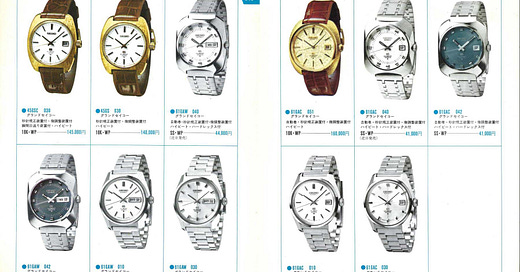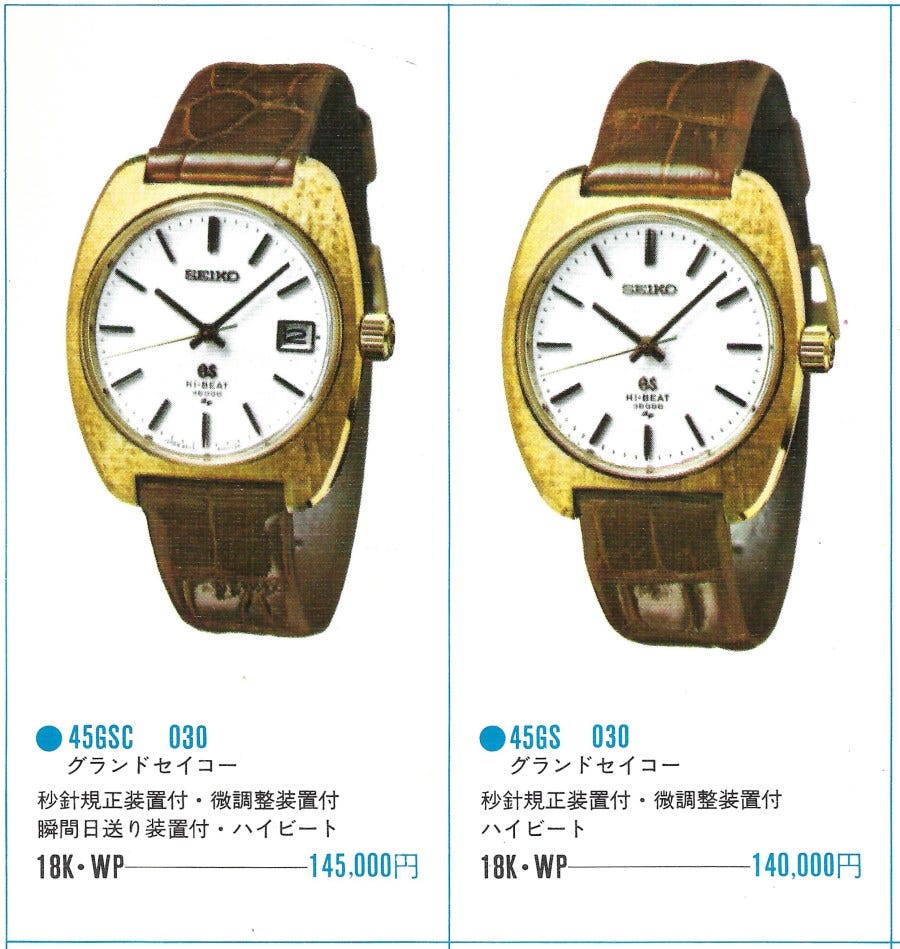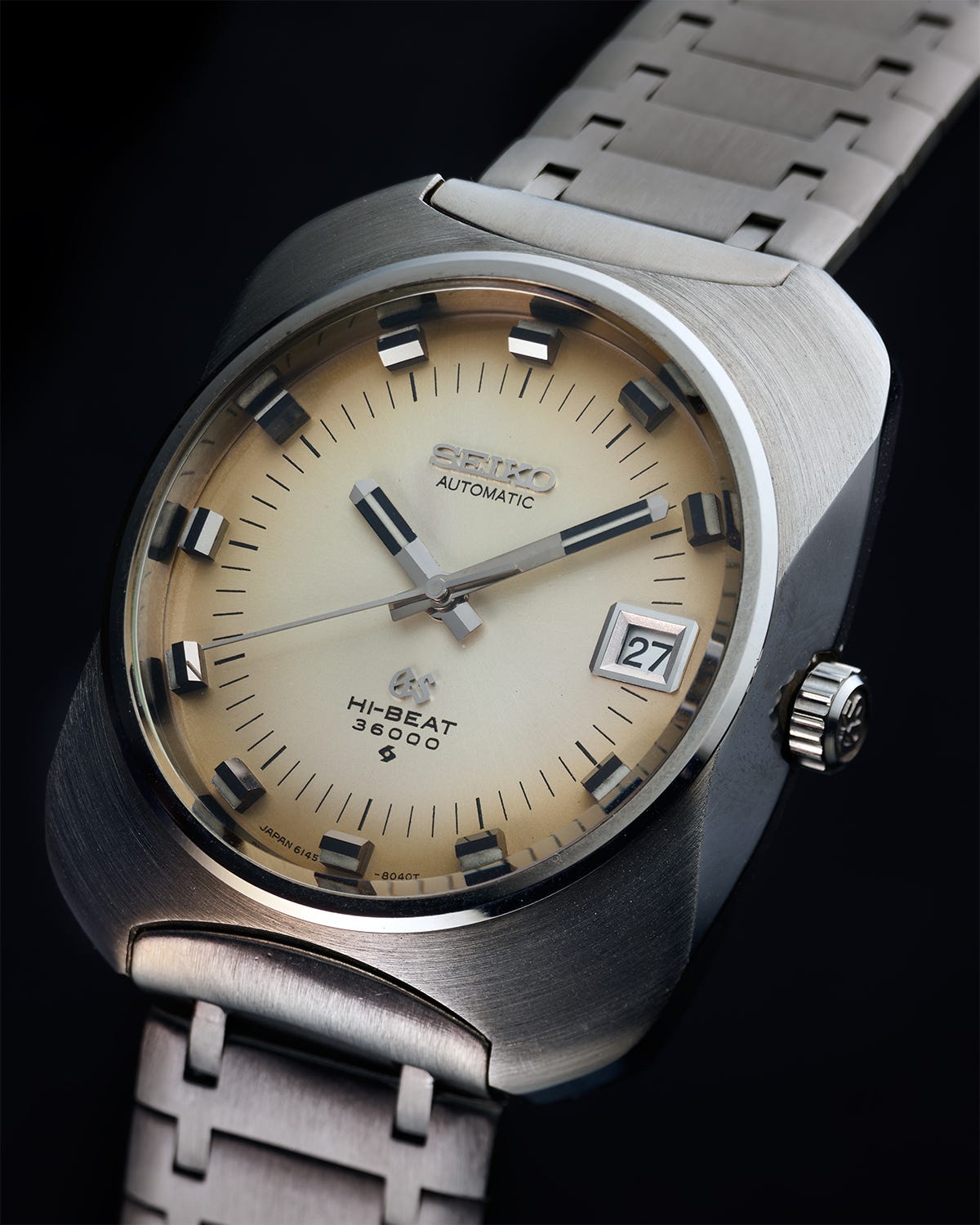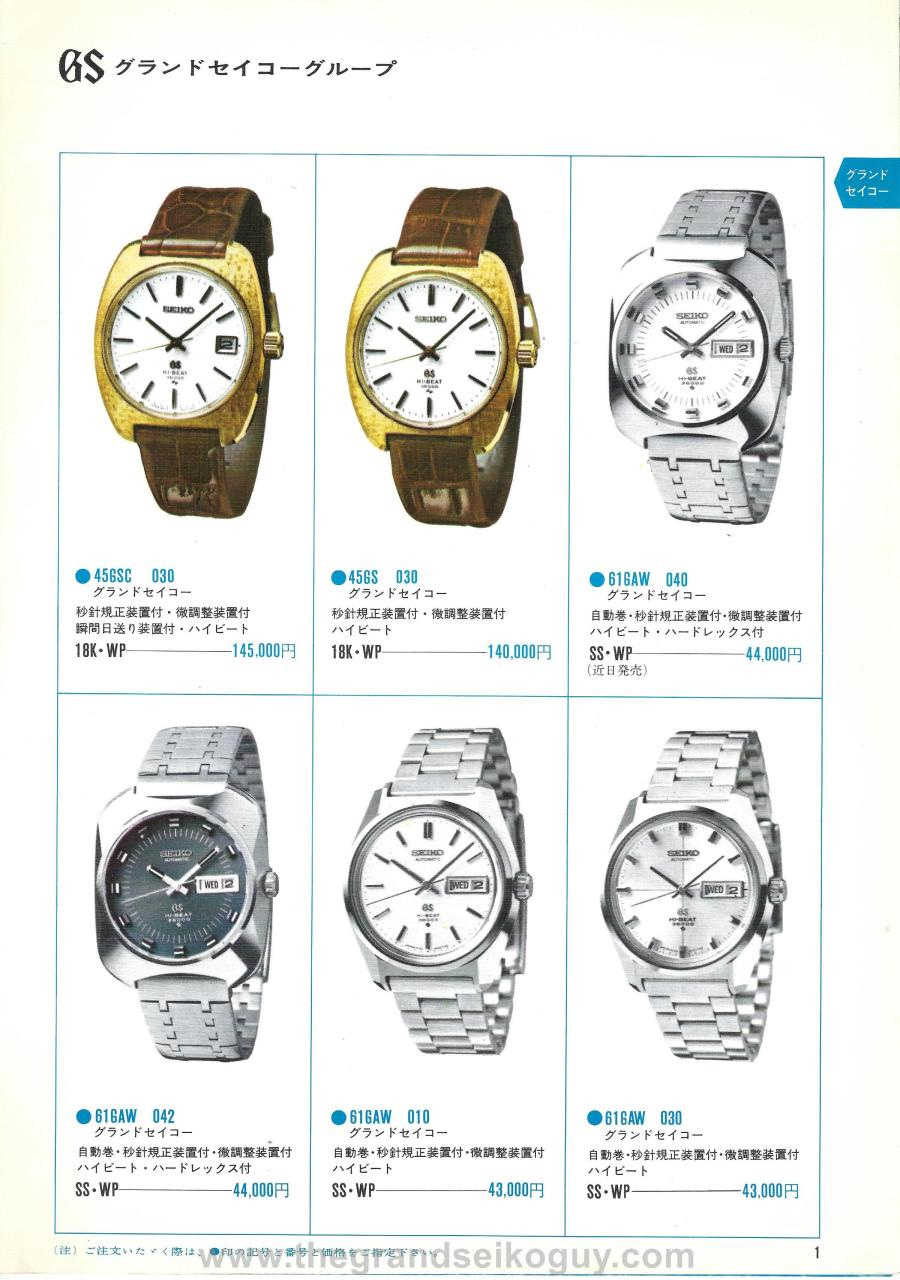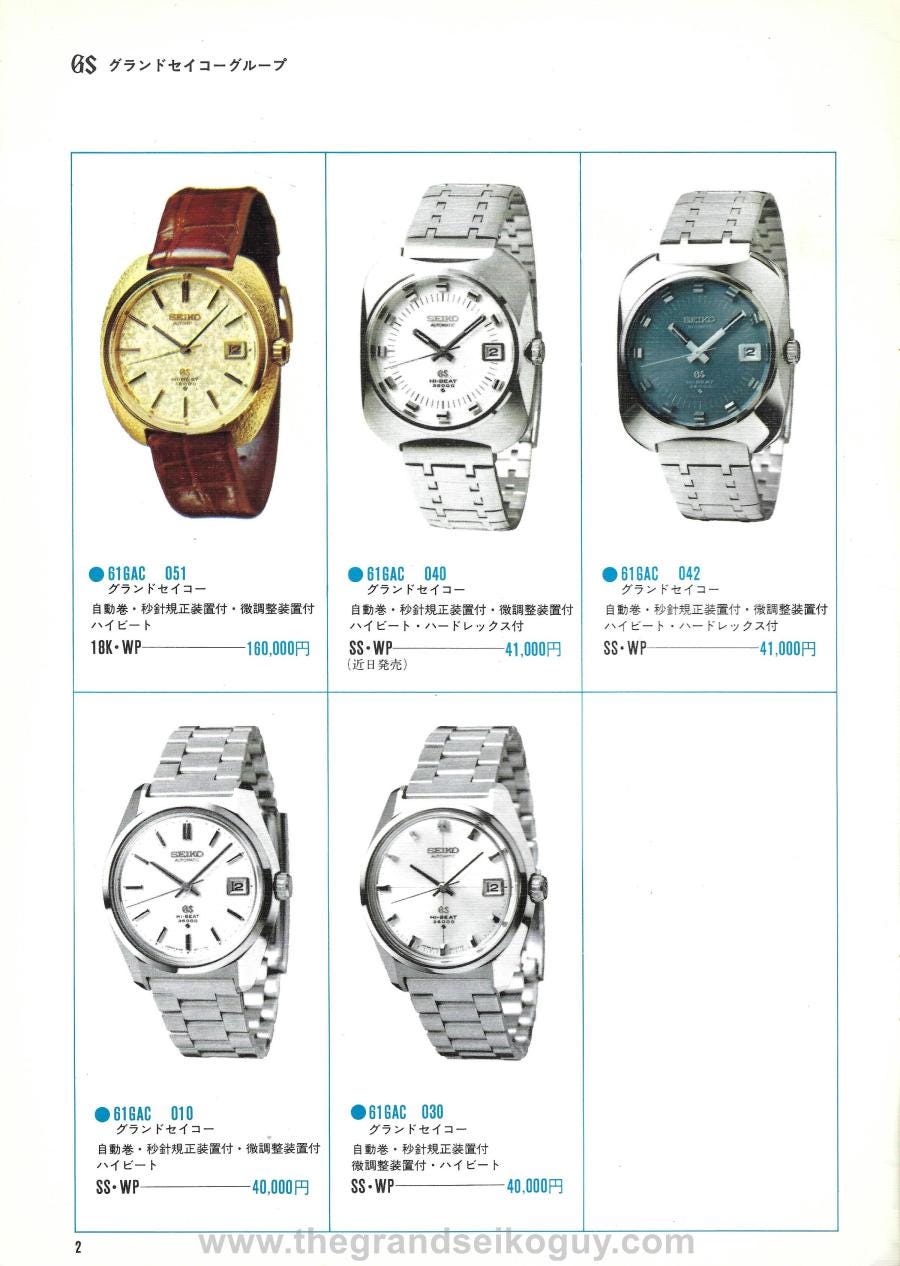Preamble
For the benefit of those subscribers who have signed up recently, each Tuesday I publish an article featuring scans of vintage Grand Seikos that appeared in the Seiko catalogues of the 1960’s and 1970’s.
Although based on the articles originally published on TGSG website, these articles will be updated where appropriate with additional knowledge gained in the three or so years since they were first made available.
Additionally, since I now have the complete set of the catalogues, I am able to publish these articles in the correct chronological order - something that wasn’t possible when posting to the main website since, when starting out documenting the catalogues, I hadn’t completed my collection of them.
You can view the previously published newsletters in this series here.
The Seiko 1969 no.2 catalogue supplement
As I mentioned in an earlier article, the “supplement” catalogues, issued after the second main catalogue of the year, detail the references added to the range subsequent to the earlier publication.
The supplement to the second catalogue was one of no fewer than four catalogues published in the second half of 1969. In it, we discover 11 new references introduced, adding to the 16 watches detailed in the regular number 2 catalogue.
Considering Grand Seiko started 1969 with just 10 watches in the range, it would be staggering enough to see that grow to 27 watches by the end of the year, but they weren’t done yet - as we will see in a later newsletter, there was still more to come.
The watches introduced to the range in this catalogue are presented over the first two pages (note - although presented here side by side, the second page is actually on the reverse of the first) -
There are two significant aspects to the models we see introduced. Firstly, following on from the introduction of the 4520/2-7000 references in the number 2 catalogue, we see further experimentation in both dial and case design, with several references flat out ignoring the fundamental tenets of the “Grammar of Design”; and secondly, for the first time for Grand Seiko, we see references offered on steel bracelets.
Existing references now offered on stainless steel bracelets
Of the 11 new references, four are models that we have already seen, but now are offered on a stainless steel bracelet.
Looking back to the main 1969 volume 2 catalogue, we can see that the premium charged for the bracelet examples of these 6145/6-8000 references was just 3,000 Yen. It is worth noting that this bracelet very rarely surfaces these days, and on its own is worth hundreds of dollars. Caveat emptor though – following Anthony Kable’s excellent article on vintage Grand Seiko bracelets, the market has woken up to the existence of these, and sadly I have now seen many examples of a frankensteined bracelet (yes, really!) being put together from disparate sources. If you are interested in acquiring an example of this bracelet, insist on seeing the stamps on the inner surface of the end links, as pictured on Anthony’s site.
The remaining watches in this catalogue can be put into three groups.
Two new solid 18K gold cased references from Daini
First up, we have two new offerings from Daini in the 45GS range –
These two watches, with the catalogue code 45GSC 030 equating to the movement/case code 4522-8010, and the catalogue code 45GS 030 equating to movement/case code 4520-8010, are unlike any Grand Seiko previously released.
They joined the 18K 6145/6-8000 references that were detailed, but not pictured, in the previous catalogue at the very top end of the Grand Seiko offer. Along with the 6145-8030 reference also introduced in this catalogue, there were now no fewer than 5 different solid 18K gold cased Grand Seikos in the range.
Both watches feature the same solid 18K gold case with a linen-textured finish. This case was actually also the exact same one that was used for the legendary 4520-8020 Seiko Astronomical Observatory Chronometer (“AOC”), although the case backs are of course different.
A new solid 18K gold cased reference from Suwa
Not to be out-done in the style and bling departments, we also see a fabulous new reference from Suwa introduced in this catalogue.
The 6145-8030 is one of my absolute favourite references, and a very rare one at that. Considering the amount of work that must have gone into the hand-hammered case and stunningly textured dial, it is remarkable that it was available for “just” 160,000 Yen. Here’s a studio photo of the watch just to appreciate how amazing it is -
At this point, it’s probably worth a reminder that this series of articles is based around the watches we see in the main Grand Seiko catalogues of the 1960’s and 1970’s. There are a number of references that never made a catalogue appearance, some of which have only come to my attention in very recent months - including a day-date 6146-8030 version of this watch, with the same dial and 18K case.
Once all the catalogues have been documented, there will be an additional article detailing all known Grand Seiko references not to appear in catalogues.
6145/6-8020 with blue and white dials
One can’t help but to wonder where the inspiration came from for the design of the final four new references introduced in this catalogue.
As with the 6145-8030, it’s worth taking a look at a studio shot of on of these to appreciate just how stunning they are in the metal -
Here we can see the white-dialed 6145-8020, and it is worth noting that almost every example of one of these that you will see today will have considerable patination on the dial. In the example above, it is a very attractive patination that deepens towards the edge of the dial, but the patination can be a lot stronger than this.
You might have noticed that the catalogue photos of the darker dialed variants would appear to be of different colours for the 6145-8020 and 6146-8020. However, both have an “042” suffix to their catalogue codes, which would indicate they were both actually the same colour. Why, in the catalogue, one appears blue and one grey, I don’t know, but certainly back when these were launched one could expect them both to have been some shade of blue. Certainly the colour of the dial of the 6146-8020 as shown in the subsequent main catalogue is very different to what is presented here.
Summary
Whilst “only” a supplement, this catalogue actually turns out to be one of the most interesting of all the ones I have covered to date. It dramatically expanded the Grand Seiko range by introducing no fewer than 11 new references, including 3 in solid 18K gold cases; both existing and new references for the first time being made available on bracelets; and some very bold and dramatic designs that still grab the attention even 50 years on.
Gallery
Presented below are scans of the two pages from the 1969 Number 2 catalogue supplement that feature Grand Seiko references.

